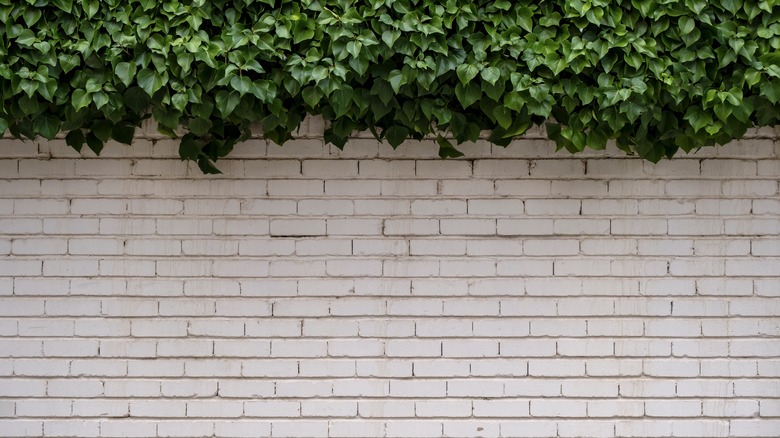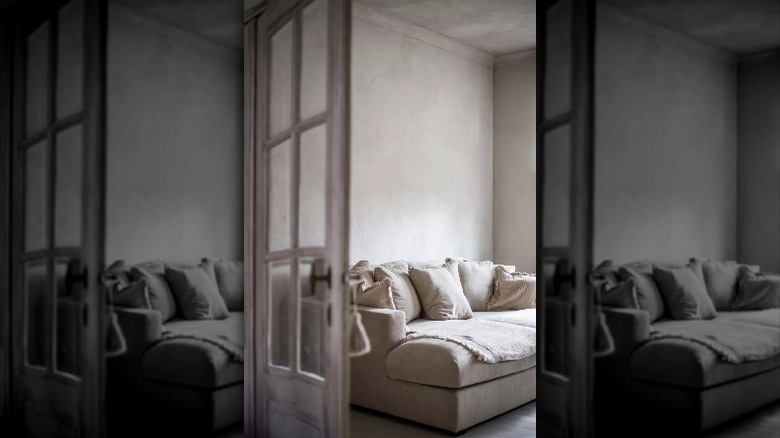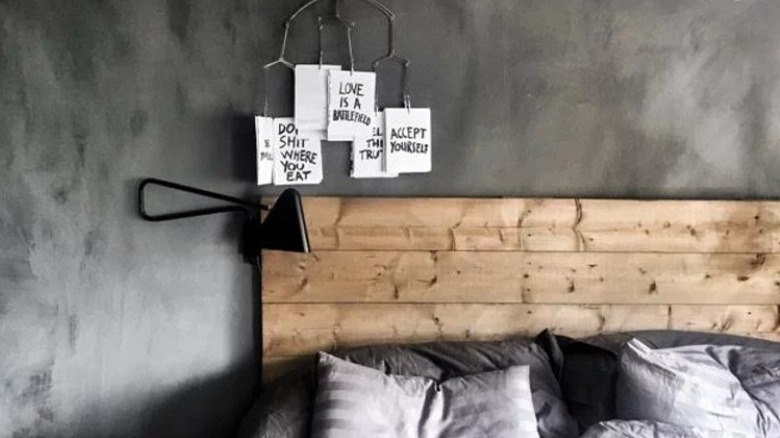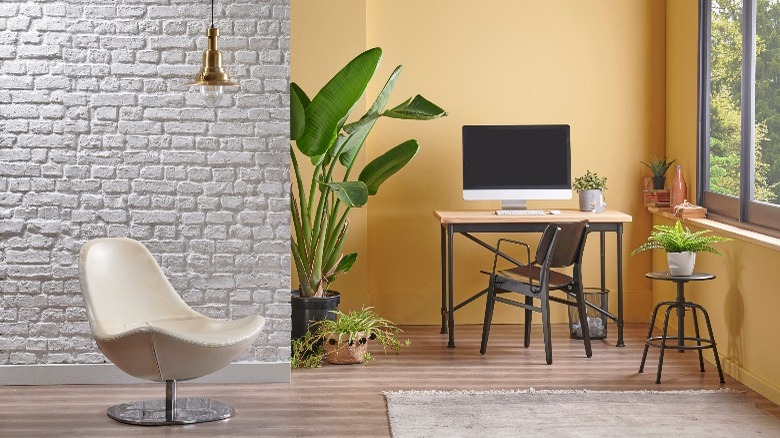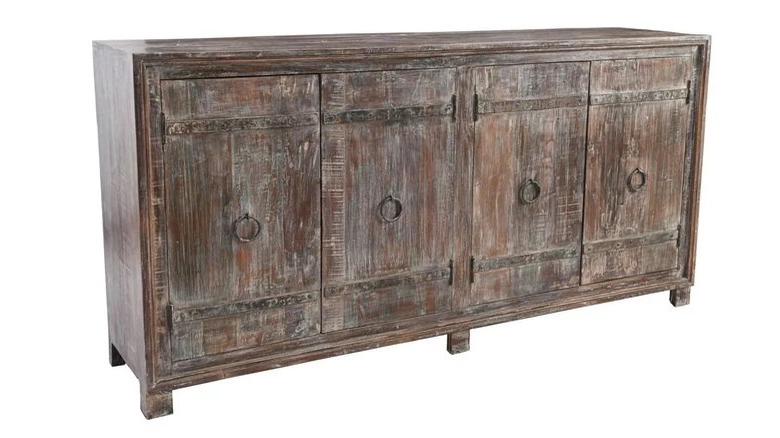4 Creative Ways To Use Limewash Paint To Transform Your Home
Professional designers and amateur DIYers alike are always on the prowl for the latest in wall trends, and they've recently found a new bestie in limewash paint. While this type of paint has been on the market for quite some time, its newer developments and applicable uses have really caught the eye of many homebuilders and flippers.
According to Farmhouse Finishes, limewash paint is created out of a combination of aged salt, mineral pigments, water, and hydrated lime. You've likely seen it before on what looked like aged brick, but was likely merely painted with limewash to look rugged and vintage. However, most recently, limewash has been combined with paint to make for some colorful, texturized wall options. The finished look lies somewhere between soft suede and the sponge-painted texturized walls popular in the early 2000s – but takes a whole lot less effort to accomplish. Best of all, limewash paint is easy to find and affordable to purchase, so you can try it out on your own house project.
Limewash Paint Drench
Color drenching is a relatively new trend among interior designers. The goal is to design a space to look trendy and inviting without relying upon the common tricks of the trade like colored accent walls or contrasting door frames. Instead, the paint covers the entirety of the room without any variation in color — even windowsills are colored in one uniform hue.
According to Living Etc., this design concept can work with limewash paint, too. While the goal of color drenching is to create a comforting, all-encompassing space, limewash paint not only still makes things cozy but also brings a bit of whimsy with its texture as well. If you decide that you want to try to limewash paint drench a room, go for a lighter or neutral color — the darker the paint color, the smaller a room will seem — and this is true with textured paint as well. Instead, a more airy color will open up your walls.
Capture imagination
The exciting part about limewash paint texture is the fact you can really create ambiance, and capture imagination however you wish. Do you live in a hot dry climate, but crave stormy days? Create swirly grey walls that will keep your bedroom comfortably overcast even when the sun is shining outside. There are so many different options thanks to the variety of colors that limewash paint is now available in. According to Lori Dennis, limewash paint has a more natural base than synthetic paints. While they come in a wide variety of colors, they are more organic and natural. Meaning, you won't find a whole lot of hot pink — instead, limewash focuses on earthy, welcoming hues.
Some ambiance-creating ideas? Deep green for a forest vibe, or blue if you love the ocean or tropical environments. Blue could also work for a celestial sky for a solar-system-themed child's bedroom, or perhaps a dark orange for a living room that has bolder wall hangings and décor. And naturally, white, beige, and other lighter colors work well in any room with any design motif.
Painted brick
Brick was the original style choice for limewash, and it's still popular in today's paint versions. Pure limewash formulations still work to give brick a distressed look that makes even brand-new homes look vintage and full of history. But since limewash paints come in subtle shades representing almost every color of the rainbow, you are no longer limited to classic white.
Brick can be painted brown, deep red, grey, blue — literally any color family you can dream of. Fireplaces are getting a new lease on life with limewash transformations, as are bathrooms, bedrooms, and even home exteriors. According to Farmhouse Finishes, limewash paint accomplishes its unique texture thanks to two different ingredients — a mineral pigment (aka the paint) mixed with the limewash, which naturally dries white. The end result? A perfectly styled brick finish that looks hundreds of years old, but only took you an afternoon to complete.
Limewashed furniture
With every wave of home decor trends, we tend to keep making painted furniture a thing. Now chalk paint can move over because limewash paint is just as effective for many furniture pieces. Limewashing can be used on dressers, chairs, buffets, headboards, tables, and more.
According to Color Atelier, the best way to limewash paint furniture is to start with bare wood. If necessary, remove existing finishes or paint layers with a furniture stripper. Then, use water to remove the remaining stripper and make sure the wood is dried thoroughly before you start painting. Painting the limewash paint directly onto the wood and letting it dry as is will result in a thicker, texturized look. Wiping the excess off while the paint is still wet will still give you limewash's signature texturized swirls, but will also allow the grain of the wood to show through. The results completely depend upon your personal preference.
